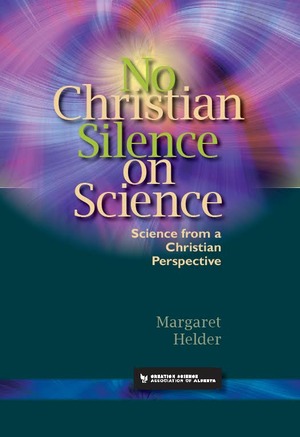Your teen is interested in science and, as a Christian parent, you worry about what an evolution-dominated university education will do to his or her faith. Many years ago, the father of a bright young girl named Margaret worried the same way, but he needn’t have. Now this Margaret, who has become Dr. Helder, is one of the most prominent women in creation science, and her recent book will help you and your teen.
After many years of writing, speaking, and lecturing—as well as raising six children and teaching science to homeschoolers from K-12—Dr. Helder has written a book that will inform, guide, and encourage young people interested in studying science. No Christian Silence on Science: Science from a Christian Perspective aims ‘to show that science, when critically evaluated, does not threaten a biblical understanding of how we came to be here.’
No Christian Silence on Science
Although this book is not written specifically for high school students, it can be used to teach teens who want to understand science from a biblical point of view and be able to talk about it wisely. This slim book covers a lot of ground; each of its five chapters is distinctly different, and some will be easier for teens than others, but all are worthwhile.
…To read more about the book itself, please see my complete review of No Christian Silence on Science on the Curriculum Choice. For more discussion of the book, continue reading below.
Although Dr. Helder does not emphasize it explicitly, the key to her book and to all Christian scholarship is to realize that discoveries in the world God created will not contradict the Word he gave. With that firm confidence, one is able to ask questions, to understand societal issues, and to deal with ethical issues in all disciplines. Of course, it requires both Bible knowledge and a deeper knowledge of their fields than students currently have, but just knowing that this is a possibility can be an encouragement. And learning some of these ideas while still in high school will begin to equip young people.
After studying high school biology a teen will, with effort, be able to understand much of the science in this book. No Christian Silence on Science also discusses history and some philosophy, and as such is not an easy book. In fact, since research level science is being discussed, the reader must fully expect to not understand everything, and rather learn to delight in what can be understood. But that, too, is a common part of learning about God’s creation. Lord willing, my girls will be studying this book after they finish Apologia’s Biology.
No Christian Silence on Science is a must-read resource for all Christian young people interested in science, whether they are in high school or university. It will remind them of the influence of prior beliefs, show them the ever-increasing problems with evolutionary theory both in science and in society, and equip them to challenge inaccurate scientific claims with grace and confidence. It is a challenging book, but anyone planning to study science should learn to accept the fact that there will be things they will not be able to understand. Ideally, all older Christian teens and adults will read this book.
Although No Christian Silence on Science is not written for homeschoolers, it could be used in the homeschool as extra reading for a biology course, or in a Bible, apologetics, worldview, or career planning course. It is a versatile book with many possible options and it could be one of the most worthwhile books your teens will ever study, because it will strengthen them to stand firm in their faith and even to be able to reach out to others.
…To read more about the book itself and for purchase information, see my complete review of No Christian Silence on Science on the Curriculum Choice.
…For some fascinating online science articles, ideal for homeschool science reading, see my list of Dr. Helder’s online articles.
—
If you enjoyed this article, you might want to follow me on Google+, where I often mention helpful or interesting ideas, friend me on Facebook where I am just a newbie, or connect with me on GoodReads where I, eventually, share what I read.
Disclosure: I received a review copy of this book; my opinions and thoughts are my own and I am not compensated for them.




